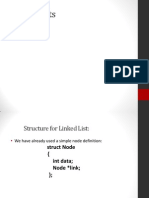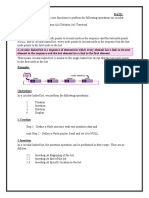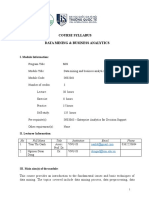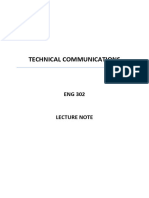0% found this document useful (0 votes)
258 views13 pages15.1 C++ Circular Linked List
A circular linked list is a type of linked list where the last node links to the first node to form a circle. There are two types: circular singly linked lists where the last node points to the first, and circular doubly linked lists where the last node points to the first and vice versa. Operations like insertion and deletion on a circular linked list have time complexities of O(1) or O(n) for insertion and O(1) for deletion due to potentially needing to traverse the list.
Uploaded by
Ishaan kataraCopyright
© © All Rights Reserved
We take content rights seriously. If you suspect this is your content, claim it here.
Available Formats
Download as PDF, TXT or read online on Scribd
0% found this document useful (0 votes)
258 views13 pages15.1 C++ Circular Linked List
A circular linked list is a type of linked list where the last node links to the first node to form a circle. There are two types: circular singly linked lists where the last node points to the first, and circular doubly linked lists where the last node points to the first and vice versa. Operations like insertion and deletion on a circular linked list have time complexities of O(1) or O(n) for insertion and O(1) for deletion due to potentially needing to traverse the list.
Uploaded by
Ishaan kataraCopyright
© © All Rights Reserved
We take content rights seriously. If you suspect this is your content, claim it here.
Available Formats
Download as PDF, TXT or read online on Scribd
/ 13































































































